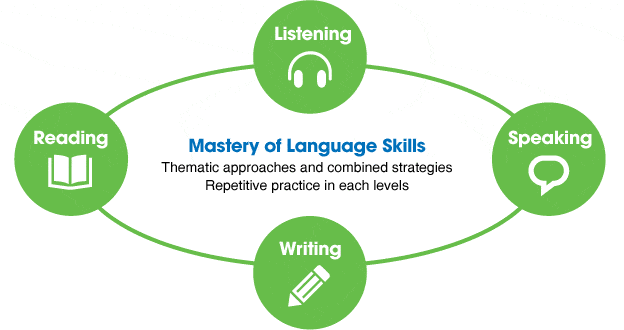In today’s increasingly globalized world, the English language plays a crucial role in communication and business. This has led to a growing demand for English as a Second Language (ESL) teachers worldwide. However, teaching ESL students requires a unique set of skills that go beyond language proficiency. In this article, we will explore the top ESL teacher skills required in international education.
Understanding the Importance of ESL Teacher Skills in International Education
ESL teachers play an essential role in promoting global understanding and communication. They are responsible for helping students develop language skills while also building cultural awareness and sensitivity. To achieve this, ESL teachers need to possess a range of skills that go beyond basic language proficiency.
The growing demand for ESL teachers worldwide
The demand for ESL teachers continues to grow worldwide, with countries such as China, South Korea, and Japan actively seeking qualified teachers. The COVID-19 pandemic has also accelerated the shift towards online learning, creating new opportunities for ESL teachers to teach English remotely.
As more and more students around the world seek to learn English, the demand for qualified ESL teachers is expected to continue to rise. This presents a unique opportunity for teachers who are passionate about language and culture to make a meaningful impact on the world.
The role of ESL teachers in promoting global understanding
ESL teachers play a critical role in fostering cross-cultural communication, breaking down language barriers, and promoting understanding between different cultures and nationalities. The ability to develop culturally sensitive teaching methods and adapt to diverse student backgrounds is a key component of this role.
By teaching English in a way that is sensitive to the cultural backgrounds of their students, ESL teachers can help to promote greater understanding and respect between different cultures. This, in turn, can help to break down barriers and promote greater harmony and cooperation on a global scale.
ESL teachers can also help to promote global understanding by encouraging their students to explore different cultures and perspectives. By exposing their students to a wide range of cultural experiences, ESL teachers can help to broaden their students’ horizons and foster a greater appreciation for diversity.
Overall, the role of ESL teachers in promoting global understanding is critical to building a more peaceful and interconnected world. By developing the skills necessary to teach English in a culturally sensitive and effective way, ESL teachers can make a meaningful contribution to this important goal.
Essential Language and Communication Skills
Mastering the English language
As an ESL teacher, mastery of the English language is a fundamental requirement. This includes not only a strong grasp of grammar, vocabulary, and syntax but also the ability to communicate fluently and confidently.

Mastering the English language is not an easy feat. It requires a lot of time and effort, and it is a lifelong process. ESL teachers must constantly work on improving their language skills to be effective in their profession. They must read extensively, listen to English speakers, and practice speaking and writing in English.
It is also essential for ESL teachers to keep up with the latest developments in the English language. New words and phrases are constantly being added to the language, and it is important to be aware of them to communicate effectively with students.
Adapting to different accents and dialects
ESL teachers must be able to adapt to different accents and dialects to facilitate communication and avoid misunderstandings. This requires an understanding of the various nuances of English, including idioms, colloquialisms, and slang.
Adapting to different accents and dialects can be challenging, especially for new ESL teachers. However, it is a skill that can be developed with practice. ESL teachers can listen to different accents and dialects, watch movies and TV shows, and interact with people from different regions to improve their understanding of the language.
It is also important for ESL teachers to be aware of the cultural differences that may affect communication. Different cultures have different communication styles, and it is essential to be sensitive to these differences to build rapport with students.
Developing strong listening and speaking skills
Effective listening and speaking skills are essential for effective communication. ESL teachers must be able to listen attentively to their students’ needs and communicate clearly and effectively to facilitate learning.
Developing strong listening and speaking skills is not only important for ESL teachers but for anyone who wants to communicate effectively. ESL teachers can improve their listening skills by paying attention to nonverbal cues, asking clarifying questions, and avoiding distractions. They can also improve their speaking skills by practicing pronunciation, intonation, and stress patterns.
ESL teachers can also use various techniques to improve their students’ listening and speaking skills. These include role-playing, group discussions, and debates. By providing opportunities for students to practice their language skills in a safe and supportive environment, ESL teachers can help their students become more confident and fluent in English.
Cultural Awareness and Sensitivity

Understanding cultural differences in the classroom
ESL teachers must recognize and adapt to cultural differences among their students. This includes understanding the values, beliefs, and customs of different cultures and recognizing how these may influence learning outcomes.
It is important for ESL teachers to be aware of the diverse cultural backgrounds of their students. This knowledge can help teachers to create a more inclusive and welcoming classroom environment, where students feel comfortable and valued. For example, in some cultures, it is considered disrespectful to make direct eye contact with authority figures, while in others, it is a sign of respect. Understanding these differences can help teachers to avoid misunderstandings and build positive relationships with their students.
Additionally, cultural differences can affect learning styles and preferences. For example, in some cultures, students may be more comfortable learning through group work and collaboration, while in others, they may prefer to work independently. ESL teachers should be aware of these differences and be prepared to adapt their teaching methods to accommodate the needs and preferences of their students.
Adapting teaching methods to diverse student backgrounds
ESL teachers must be able to adapt their teaching methods to the diverse backgrounds of their students. This may require modifications to lesson plans, learning materials, and teaching styles to accommodate different learning styles and cultural backgrounds.
One effective way to adapt teaching methods is to use culturally relevant materials and examples in the classroom. For example, when teaching vocabulary related to food, teachers can use examples of traditional dishes from their students’ cultures. This not only makes the lesson more engaging and relevant to students, but also shows that the teacher values and respects their cultural backgrounds.
Another way to adapt teaching methods is to provide opportunities for students to share their own cultural experiences and knowledge. For example, teachers can assign projects or presentations that allow students to showcase their cultural traditions and customs. This not only promotes cultural exchange and appreciation, but also helps students to feel more connected to their classmates and the wider community.
Encouraging cultural exchange and appreciation
ESL teachers should encourage cultural exchange and appreciation in the classroom. This can be achieved through activities that promote cross-cultural learning, such as cultural celebrations, presentations, and discussions.
One way to encourage cultural exchange is to organize cultural celebrations throughout the year. For example, teachers can plan a potluck where students bring traditional dishes from their cultures to share with their classmates. This not only allows students to experience new foods and customs, but also creates a sense of community and belonging in the classroom.
Another way to promote cultural exchange is to assign group projects that require students to work with classmates from different cultural backgrounds. This allows students to learn from each other and develop a deeper understanding and appreciation of different cultures.
Finally, teachers can encourage cultural appreciation by incorporating multicultural literature and media into their lessons. This not only exposes students to different perspectives and experiences, but also helps to break down stereotypes and promote understanding and empathy.
Effective Classroom Management Techniques
Establishing clear expectations and routines
Effective classroom management requires clear expectations and routines. ESL teachers should establish rules and procedures that promote a positive and inclusive learning environment for all students.
One way to establish clear expectations is to create a classroom contract with the students. This contract outlines the expectations for behavior, participation, and respect in the classroom. By involving the students in creating this contract, they will feel more invested in following it. Additionally, having a routine for the beginning and end of class can help students transition into and out of learning mode. This routine can include things like a warm-up activity, a review of the previous lesson, and a preview of the upcoming lesson.
Managing student behavior and discipline
ESL teachers may encounter behavioral challenges in the classroom, requiring effective strategies for discipline and management. This may include using positive reinforcement techniques, implementing effective consequences, and providing emotional support to students who require it.
Positive reinforcement techniques can include things like verbal praise, stickers, or small rewards for good behavior. However, it is important to use these techniques consistently and avoid over-rewarding students. Effective consequences for misbehavior can include things like a time-out, a loss of privileges, or a conference with the teacher. It is important to be clear and consistent with consequences so that students know what to expect. Finally, providing emotional support to students who may be struggling with behavior or other issues can be crucial in helping them succeed in the classroom.
Creating a positive and inclusive learning environment
Teachers should work to create a positive and inclusive learning environment that supports the unique needs of each student. This may involve adapting to different learning styles, providing meaningful feedback and recognition, and recognizing individual differences.
Adapting to different learning styles can involve using a variety of teaching methods, such as visual aids, hands-on activities, and group work. Providing meaningful feedback and recognition can involve praising students for their efforts, as well as providing constructive criticism to help them improve. Recognizing individual differences can involve acknowledging and celebrating the diversity of the classroom, including different cultures, languages, and learning abilities.
Overall, effective classroom management is essential for creating a positive and productive learning environment for ESL students. By establishing clear expectations and routines, managing student behavior effectively, and creating a positive and inclusive learning environment, ESL teachers can help their students succeed academically and personally.


